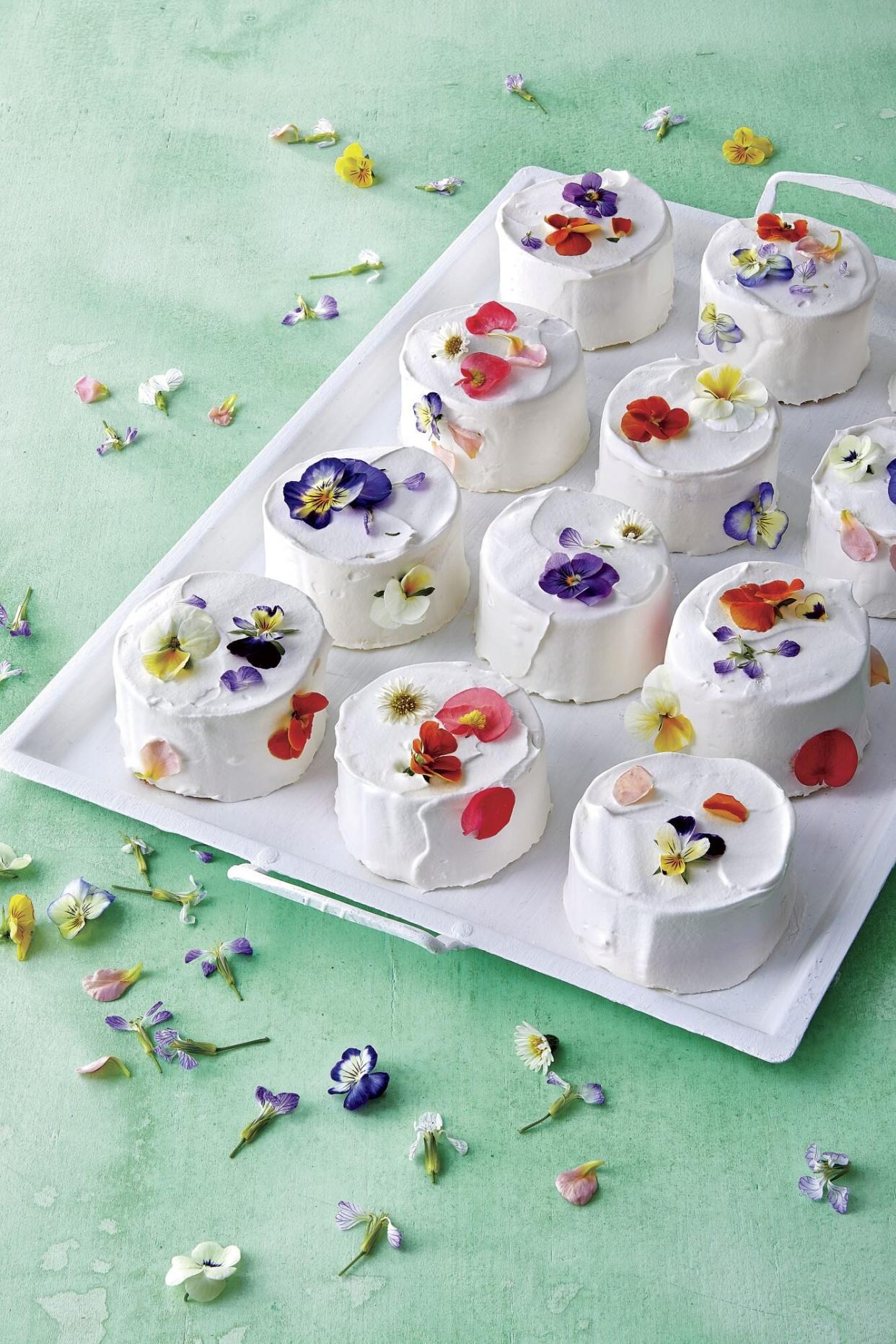7 Edible Flowers Almost Too Pretty to Eat

Antonis Achilleos; Food Styling: Torie Cox; Prop Styling: Kay E. Clarke
Spring and summer are jam-packed with delicious, fresh new growth: squash, okra, strawberries, and peaches, to name a few. What many people don't know, though, is that lots of the beautiful Southern color we see in our front yards can make its way to our plates. No, not just from our vegetable gardens—from our flower gardens too. Edible flowers have served for hundreds of years as a way to both beautify and enhance the flavors of a kitchen creation, whether it's an entrée, a dessert, or even a drink.
You've probably eaten a flower whether you realize it or not. Pastry chef, food stylist, and co-owner of OWL Bakery in Asheville, North Carolina, Nancy Hughes, reminisces on how she first fell in love with edible flowers: "Like most Southern kids, picking honeysuckle and drinking the nectar." Hughes incorporates fresh edible flowers constantly in her culinary masterpieces. "When using edible flowers, you experience flavors ranging from spicy to bitter to floral. Flowers are almost their own version of spices," she says. "Incorporating flowers, whether it's in an infusion or for decoration, adds a layer of whimsy that really pleases a crowd."
Ready to jump in and make your seasonal dishes sing? Take a look below for some inspiration.
1. Roses
Use one of the most well-known flowers in the world to add an essence of fruitiness to your teas and jams this spring. If you're using rosewater as opposed to real rose petals, use a light touch—a little goes a long way.
2. Marigolds
These gorgeous orange blossoms pull double-duty: Hughes recommends lining your vegetable garden with them. "They'll keep pests away," she says, "and deliver a flavor both bitter and sweet." Pull the stems from the blooms to enjoy—they're particularly delicious in a dish that features a pickled vegetable.
3. Anise hyssop
Tiny, delicate, and soft purple, these dreamy little blooms make a statement. Their licorice-y flavor adds a layer of complexity, and (bonus!) bees love anise hyssop, which makes growing it good for the planet and your tastebuds. Sprinkle on top of ice cream, salads, or tuck these tiny flowers into the cascading folds of meringue on top of a tart, like this one.
4. Zucchini blossoms
It's impossible to forget your first fried zucchini blossom. Lush, juicy, and so delicious, these yellow flowers appear in zucchini and squash plants. For best results, be sure to clip them in the morning while they're open, about a ½ inch from the bottom of the bloom.
5. Butterfly pea
Yielding a vibrant, rich purple color, this flower functions as a dye and a flavor enhancer. Looking to create a striking icing? Boil butterfly pea and strain out the plant matter to get a vivid purple color ideal for cakes or for infusing teas without resorting to artificial food colorings.
6. Violets
Look for their white and purple blooms and heart-shaped petals. Violets, historically sugared and placed in and around desserts, have recently come back into the zeitgeist in boutique chocolateries and modern bakeries. Take a trip to the Victorian era and give candied violets a try, or use their natural perfume to make a warm-weather drink instantly aromatic.
7. Pansies
Is there a happier flower than a pansy shining up from your porch planter? Now you can transfer the joy of encountering these sweet flowers in the wild right to your dining room table. Their earthy, sometimes minty flavor packs the perfect punch when pressed into the tops of petit fours.
